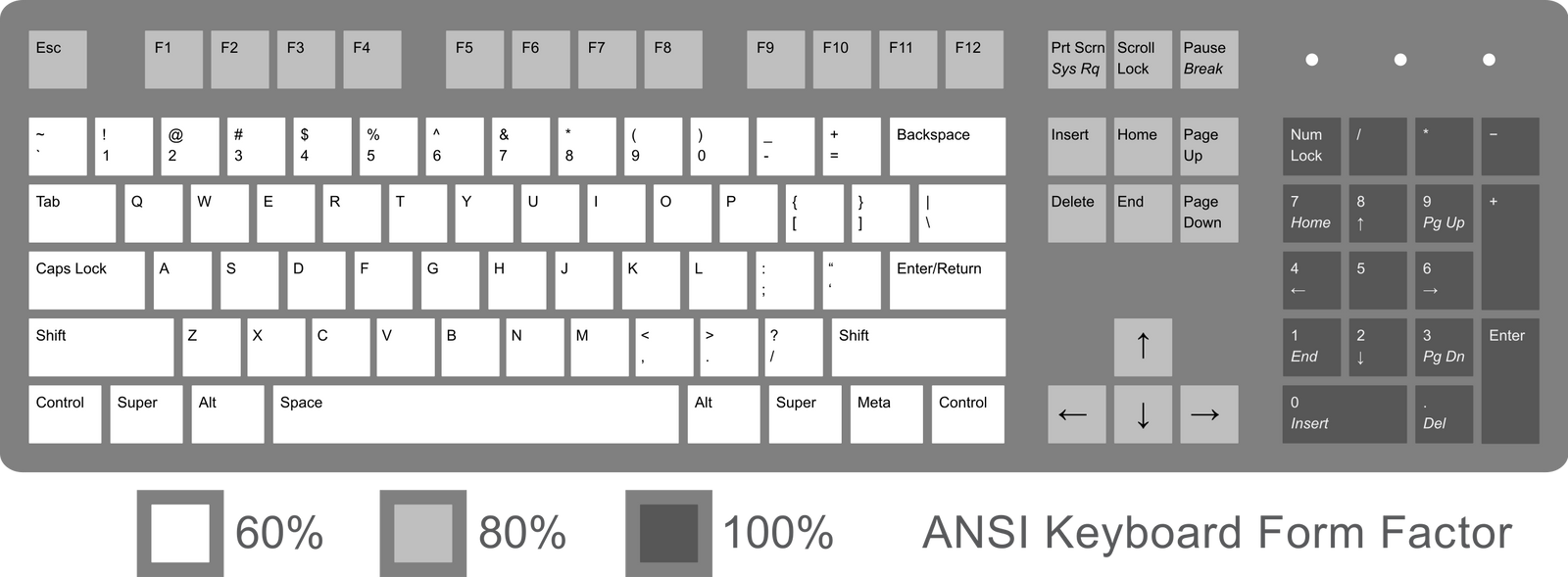What Is the ANSI Keyboard Layout?
In the diverse world of computer peripherals, the keyboard is a central element for interfacing with technology. Keyboards come in various sizes, shapes, and colors, each offering unique features. However, despite this variety, most keyboards share a common attribute—their physical key arrangement. This standardization is not due to a lack of innovation but rather adherence to a widely accepted convention known as the ANSI keyboard layout.
Understanding the ANSI Keyboard Layout
The term "ANSAM" stands for the American National Standards Institute, an organization that set forth the ANSI keyboard layout standard in 1988. This layout has become one of the most prevalent schemas for arranging keys on a full-sized keyboard, which typically includes 109 keys. Its design, deeply rooted in the history of typing devices from typewriters to modern computer terminals, offers a layout that seasoned typists can use seamlessly across different keyboards, requiring minimal adjustment to their typing practices or muscle memory.
Key Characteristics of the ANSI Layout
The ANSI layout is primarily defined by its physical structure—the size, shape, and placement of keys. This physical specification is distinct from logical layouts like QWRTY or Dvorak, which dictate where each letter, number, or function is placed across the keyboard's keys. The benefit of a physical layout standard like ANSI is that it allows users to switch between different logical arrangements without the need to physically alter the keyboard, assuming the software allows for such remapping.

Contrasting ANSI with ISO Layouts
Although the ANSI layout is predominantly used in the United States, it is not the only standard in use globally. The ISO layout, endorsed by the International Standards Organization and featuring 110 keys, is commonly found throughout Europe. A few key differences set these two layouts apart:
- Enter Key: The ANSI layout features a horizontally elongated Enter key, while the ISO version opts for an inverted 'L' shaped Enter key, which extends slightly to the left at the top.
- Shift Key: In the ANSI layout, both Shift keys are noticeably longer. The ISO layout, however, reduces the left Shift key's size to accommodate an additional key directly next to it.
- Alt Keys: The right Alt key in ANSI is replaced by an Alt Graph (AltGr) key in the ISO layout, which facilitates typing additional characters that are particularly useful for European languages utilizing diacritical marks.
- Backslash Key: The placement of the backslash key also differs; in the ANSI layout, it is positioned directly above the Enter key on the right side, whereas the ISO places it to the left and slightly below the Enter key.
The Choice Between ANSI and ISO
The selection between ANSI and ISO often depends on regional availability and the specific needs of users. Both layouts enable effective typing but may require some initial adjustment when switching from one to the other. Furthermore, the growing trend in customizable mechanical keyboards has led to a predominance of ANSI-compatible designs, particularly in the American market—making ANSI a more accessible option for enthusiasts.
In summary, the ANSI keyboard layout offers a standard that balances uniformity with flexibility, allowing users to navigate seamlessly across various computing environments. While alternatives like ISO exist and serve their respective audiences well, ANSI's widespread adoption, especially in professional and enthusiast circles, highlights its enduring relevance in the digital age.

